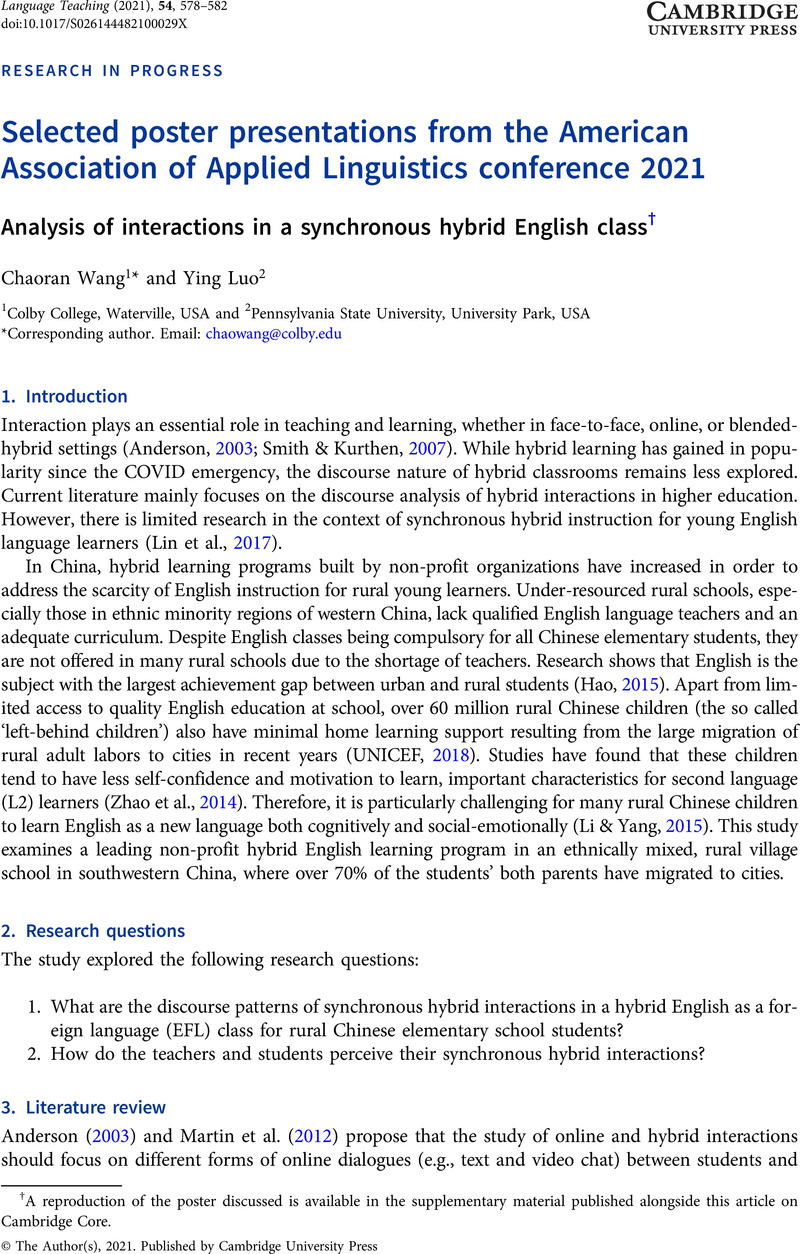Article contents
Selected poster presentations from the American Association of Applied Linguistics conference 2021
Analysis of interactions in a synchronous hybrid English class
Published online by Cambridge University Press: 02 August 2021
Abstract

- Type
- Research in Progress
- Information
- Copyright
- Copyright © The Author(s), 2021. Published by Cambridge University Press
Footnotes
A reproduction of the poster discussed is available in the supplementary material published alongside this article on Cambridge Core.
References
- 2
- Cited by



